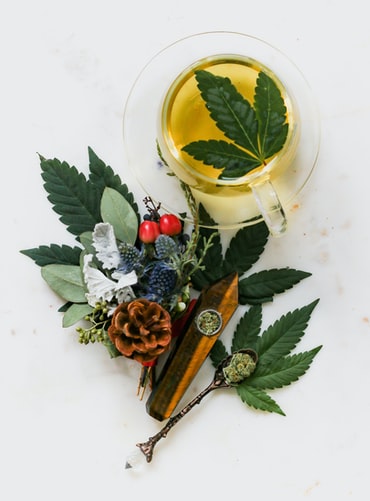
Nanocraft
The hype around CBD may only have been persisting in …
The hype around CBD may only have been persisting in the air for the last few years, but don’t let that trick you into believing CBD is something new. Researches have been conducted to verify the benefits of CBD since the early 70s. Indeed, Cannabis has been used as a medicinal treatment for thousands of years.
However, the U.S. government’s grouping of marijuana with other hard drugs during the counter culture movement and the media’s negative portrayal of pot damaged its reputation. It was only in the last decade that a re-emergence has been witnessed with more people becoming aware of Cannabis, CBD, and their proven health benefits.
So let’s take a stroll down the history lane in this article and learn more about the origins of CBD as well as current legal status across the world.

The first documented use of Cannabis for health purposes ranges back to 2700 BC when Chinese Emperor Sheng Nung was said to have consumed Cannabis-infused tea as a cure for arthritis, pain relief, malaria, and more.
Studies indicate its use was prevalent even before that ranging into 10,000 BC, where it was assumed to be used in rituals and to alter the state of minds using its psychoactive attributes. Cannabis sativa was also a source of fiber used in textiles, ropes, sails for ships, and more. The hemp plant is believed to be have been used by humans for millenniums, making its negative publicity all the more puzzling.
For the better part of the 1800s, the cannabis plant was mainly cultivated for its textile properties. However, French poet Baudeville popularized it’s consumption in his poems, while Queen Victoria is thought to have used CBD to alleviate menstrual cramps.
Irish physician and medical researcher, William B. O’Shaughnessy, published a controversial study in 1837 outlining the various therapeutic effects of Cannabis.
Hemp cultivation started taking center stage on the American shores during this period, with pharmacies selling cannabis oil as remedies for migraines, arthritis, and other conditions.
America went through a period of prohibition during the early 1900s with the roaring twenties and great depression, alternatively putting a dent in public perception of marijuana. Misinformation was widely disseminated, portraying Cannabis as an intoxicating substance with no redeeming health benefits. In 1937, the government banned the use and transport of marijuana across the country.
The plant’s death knell was almost sounded during the counterculture movement in 1970 when Cannabis was classified as a schedule 1 drug by the Controlled Substance Act and termed as a highly addictive menace that needs to be wiped out.
With the onset of a new millennium on the horizon, public perception started to change. Series of studies into potential health benefits of Cannabis were being published, with researches from as far back as the 1950s and 60s no longer swept under the rug.
While most countries around the world followed America’s suit with regards to legality, a select few like Holland were more relaxed. In 1996 however, a bombshell was dropped by California when medical marijuana was permitted as a legal alternative for patients with certain conditions like glaucoma, arthritis, etc. Various other states and countries followed, with many even legalizing recreational use of marijuana in the 2000s.
Technological progress empowered companies to isolate compounds of Cannabis, and derive the beneficial aspects of CBD without the intoxicating nature of THC. This was a massive leap for the CBD industry and led to a burgeoning market where Cannabis could once be used to treat diseases.
Cannabis growers changed from illegal cartels infusing plants with as much THC as possible, to hemp producers working under the law and using strains with less than 0.3% THC.
Pharmaceuticals also started tapping into the wide-ranging features of cannabinoids for drugs. Outdated drugs like Marinol were replaced with new THC isolates like Sativex. The giant G.W. Pharmaceuticals marketed a prescription-only CBD isolate drug called Epidiolex.
A whole new industry took over the spotlight with CBD brands going online. One of the biggest drivers of change was the case of late Charlotte Figi, whose severe epileptic condition was drastically improved with regular consumption of CBD. This garnered widespread media attention, calls for the legalization, and the foundation of industry juggernaut, Charlotte’s Web.
In 2014, Congress passed the historic farm bill act that allowed farmers to grow Cannabis provided the hemp plants have less than 0.3% THC. Companies lurched out from the shadows from this point, and a massive industry surged to the public fore overnight.
President Trump signed the Agriculture Improvement Act of 2018 into law, which separated CBD from marijuana, meaning products can be transported and used across states without worry. TSA recently stated that taking some amount of CBD oil on the plane is okay, seeing it’s not a schedule 1 drug anymore.
The number of CBD companies is truly staggering, given the relative newness of the industry, and while prices are falling, innovation is at an all-time high.
Numerous states in the U.S. and several countries around the world, including Canada, Germany, Thailand, and more, have legalized recreational use of marijuana. While it is still federally illegal, rumors abound that a new law is very much on the horizon.
Cannabis and CBD have come a full circle since it’s early days of widespread consumption, to being viewed as a menace to society, and now as an alternative treatment for a wide range of health issues. The industry is nascent, yet the promise it holds is unparalleled.
Comments (0)